-
ORIGINAL ARTICLE10-17-2022
Coping with the health condition from the perspective of people with HIV who abandoned treatment
Revista Brasileira de Enfermagem. 2022;75:e20210958
Abstract
ORIGINAL ARTICLECoping with the health condition from the perspective of people with HIV who abandoned treatment
Revista Brasileira de Enfermagem. 2022;75:e20210958
DOI 10.1590/0034-7167-2021-0958
Views0See moreABSTRACT
Objectives:
to understand how people living with HIV who have abandoned treatment face their health condition.
Methods:
a qualitative study, based on the Chronic Care Model theoretical precepts. Data were collected between April and August 2021, through interviews with 24 people registered in a specialized service in the Brazilian Midwest.
Results:
coping with the health condition included good and bad moments and is influenced by individual behaviors and the way in which the network was organized. Treatment abandonment was motivated by the absence of signs and symptoms, the way care is provided and medication side effects.
Final Considerations:
care actions focusing on behavior change and maintenance become necessary in order to favor continuity of treatment. Furthermore, the gaps identified in the way health services are organized are subject to intervention.
-
ORIGINAL ARTICLE10-07-2022
Construction and validation of a serial album for companions of patients with stroke
Revista Brasileira de Enfermagem. 2022;75(4):e20210843
Abstract
ORIGINAL ARTICLEConstruction and validation of a serial album for companions of patients with stroke
Revista Brasileira de Enfermagem. 2022;75(4):e20210843
DOI 10.1590/0034-7167-2021-0843
Views0See moreABSTRACT
Objectives:
to construct and validate a serial album, to be used in hospital discharge planning of patients with stroke.
Methods:
a methodological study, with construction of a serial album, validity by 22 judges and assessment by 22 companions. Data were collected from the Health Education Content Validity Instrument, with the companions, from the Suitability Assessment of Materials.
Results:
the serial album has 21 pages. The overall Content Validity Index was equal to 0.87 among expert judges and 1.0 among companions.
Conclusions:
the educational technology constructed was considered valid by the judges and assessed as understandable by the companions so that it presented itself as a viable technological resource for use in the health education of companions of patients with stroke.
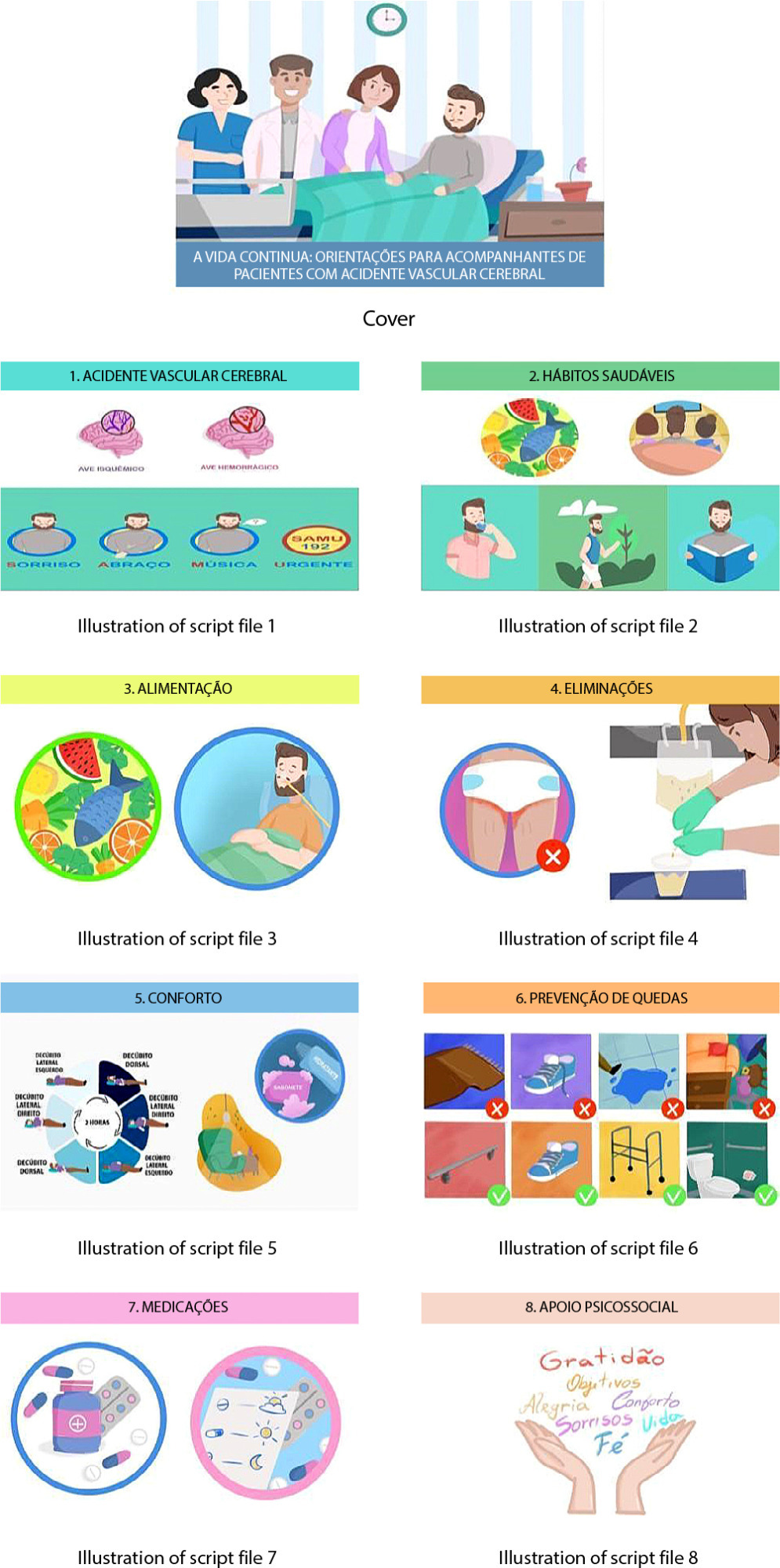
-
REVIEW10-07-2022
Strategies for thirst management in postoperative adult patients: a scoping review
Revista Brasileira de Enfermagem. 2022;75(4):e20220154
Abstract
REVIEWStrategies for thirst management in postoperative adult patients: a scoping review
Revista Brasileira de Enfermagem. 2022;75(4):e20220154
DOI 10.1590/0034-7167-2022-0154
Views0See moreABSTRACT
Objectives:
to map the strategies for managing thirst in postoperative adult patients.
Methods:
scoping review was conducted in October 2021 in 19 data sources: 14 databases and 5 platforms to search in the grey literature. It was prepared according to the recommendations of the Joanna Briggs Institute and the checklist of the Preferred Reporting Items for Systematic reviews and Meta-Analyses extension for Scoping Reviews. Nine selected articles were part of the final sample.
Results:
there is evidence of strategies to manage postoperative thirst using interventions such as water, ice, mentholated measures, carbohydrate and protein enriched fluid, oral hydrator, flavored gargling, cold gargling, wet gauze, 0.75% citric acid spray, and cold water.
Final Considerations:
the strategies observed may be reduced to cold and menthol use, salivary stimulants, and early introduction of fluids. The outcomes were positive in all the studies reviewed.
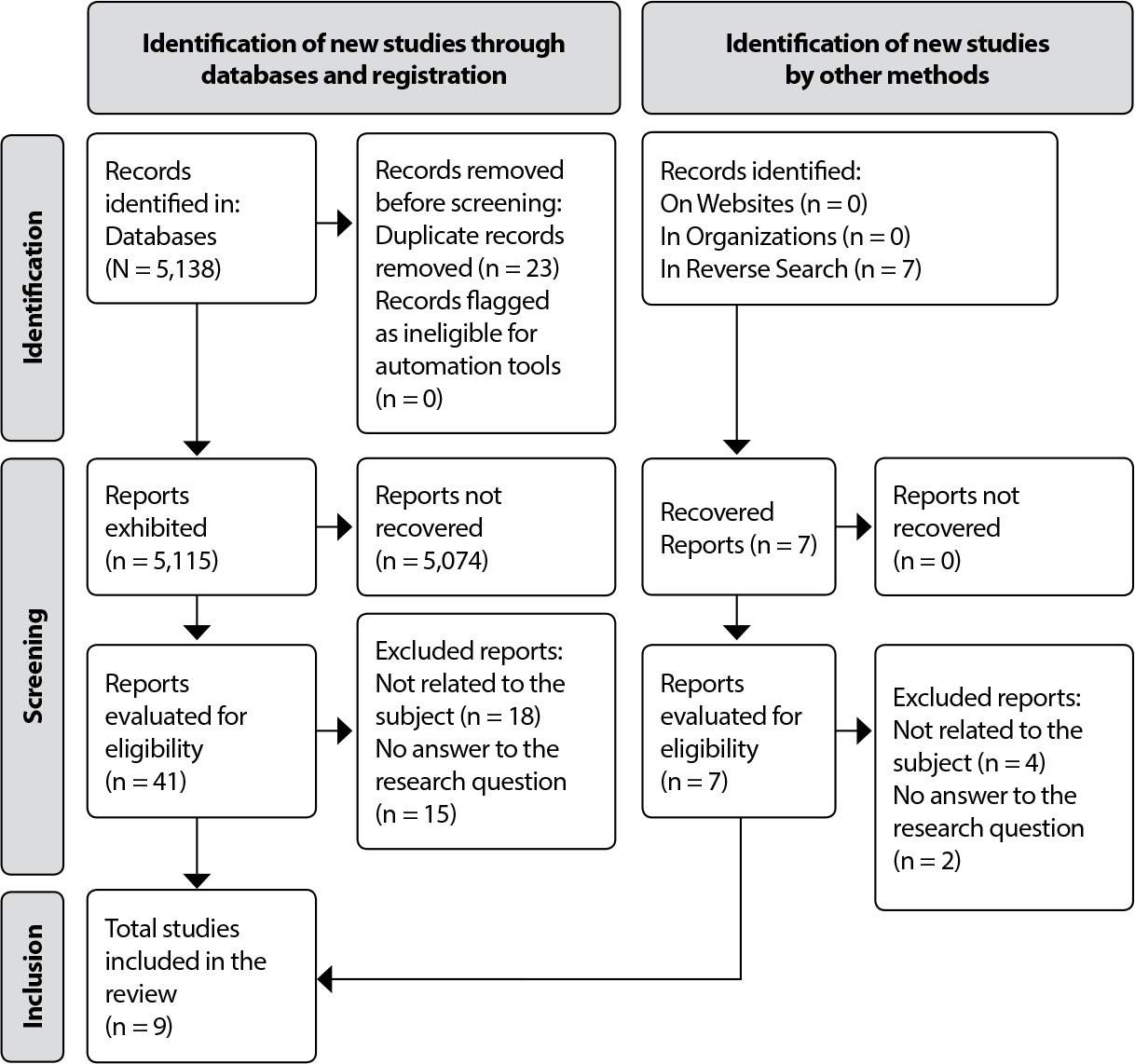
-
ORIGINAL ARTICLE10-07-2022
Perception of men perpetrators of violence about paternity
Revista Brasileira de Enfermagem. 2022;75(4):e20210890
Abstract
ORIGINAL ARTICLEPerception of men perpetrators of violence about paternity
Revista Brasileira de Enfermagem. 2022;75(4):e20210890
DOI 10.1590/0034-7167-2021-0890
Views0See moreABSTRACT
Objectives:
to learn about the perception of men in the judicial process due to spousal violence about paternity.
Methods:
a descriptive, qualitative study with nine men in the judicial process due to spousal violence. Data were collected through interviews; the men validated the data, which were systematized by the categorical thematic content analysis, and analyzed in light of scientific texts that discuss the subject.
Results:
the study allowed the creation of three categories: the father is the example for the son; the father must provide for the son’s needs; the father corrects the son.
Conclusions:
that context reveals the need to re-signify paternity to influence children’s education positively.
-
ORIGINAL ARTICLE10-07-2022
Nursing workload associated with neonatal mortality risk: a cross-sectional study
Revista Brasileira de Enfermagem. 2022;75(4):e20200965
Abstract
ORIGINAL ARTICLENursing workload associated with neonatal mortality risk: a cross-sectional study
Revista Brasileira de Enfermagem. 2022;75(4):e20200965
DOI 10.1590/0034-7167-2020-0965
Views0See moreABSTRACT
Objectives:
to analyze the association between nursing workload and neonatal mortality risk in newborns admitted to the Neonatal Intensive Care Unit.
Methods:
this is an observational, cross-sectional study conducted from January 2019 to January 2020.
Results:
the sample consisted of 399 newborns, 55.4% male, Nursing Activities Score mean of 67.5%, and Score for Neonatal Acute Physiology Perinatal Extension mean of 17.7, revealed itself as a predictor of the risk of death, while gestational age, length of hospitalization, and the first-minute Apgar established a protective relationship. The correlation between workload and neonatal mortality was low (r= 0.23, p=0.0009).
Conclusions:
the workload of the nursing team is not associated with the risk of mortality in the Neonatal Intensive Care Unit, as measured by the Nursing Activities Score.
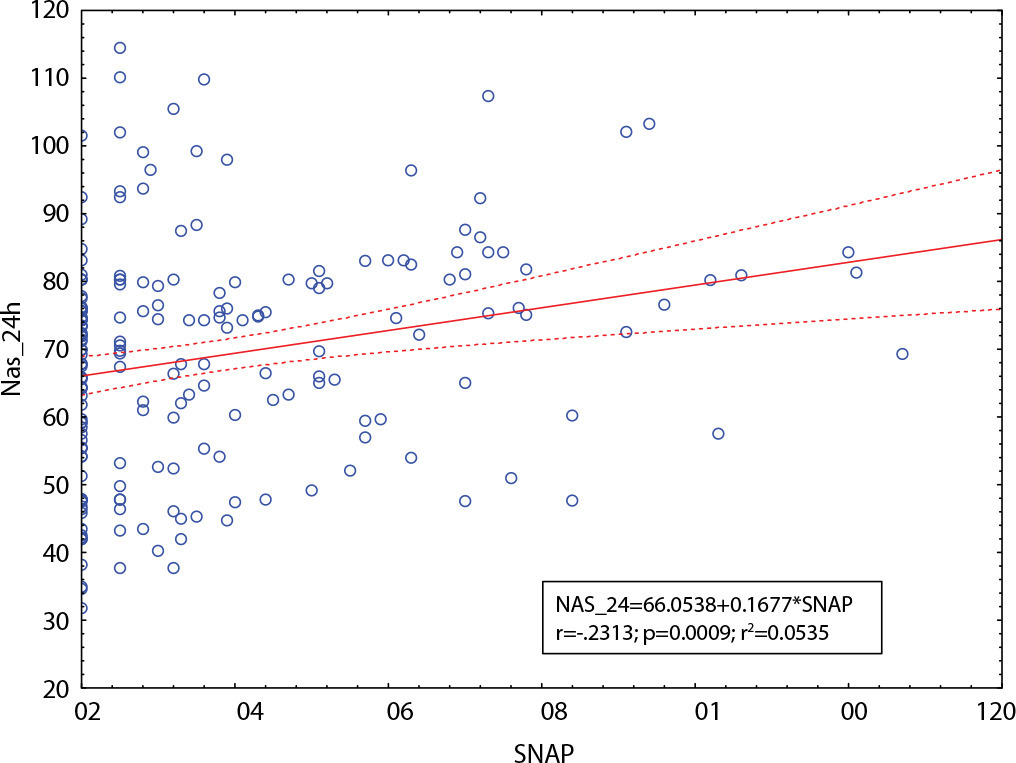
-
ORIGINAL ARTICLE10-07-2022
Violence against nursing workers: repercussions on patient access and safety
Revista Brasileira de Enfermagem. 2022;75(4):e20210765
Abstract
ORIGINAL ARTICLEViolence against nursing workers: repercussions on patient access and safety
Revista Brasileira de Enfermagem. 2022;75(4):e20210765
DOI 10.1590/0034-7167-2021-0765
Views1See moreABSTRACT
Objectives:
to analyze the repercussions of violence against nursing professionals, in the access and safety of patients in Family Health Strategy.
Methods:
a mixed study, with 169 nursing professionals. We used a socio-labor questionnaire, Survey Questionnaire Workplace Violence in the Health Sector, a patient safety instrument and interviews.
Results:
verbal aggression was related to support (p=0.048), respect (p=0.021), hours of care (p=0.047) and patient safety behaviors (p=0.033) among professionals. Suffering from bullying was related to fear of questioning when something is wrong (p=0.010) and lack of support from management (p=0.016). Victims of physical violence felt that their mistakes could be used against them. Mixed data converge and confirm that violence affects professional behavior and puts Primary Health Care attributes at risk.
Conclusions:
violence affects workers’ behavior, interferes with the care provided, weakens the access and safety of patients.
-
REVIEW10-03-2022
Intravenous therapy device labeling in Intensive Care Units: an integrative review
Revista Brasileira de Enfermagem. 2022;75(6):e20220049
Abstract
REVIEWIntravenous therapy device labeling in Intensive Care Units: an integrative review
Revista Brasileira de Enfermagem. 2022;75(6):e20220049
DOI 10.1590/0034-7167-2022-0049
Views0See moreABSTRACT
Objectives:
to synthesize the evidence on intravenous device labeling used to identify medications administered to patients in Intensive Care Units, with a view to preventing medication errors.
Methods:
an integrative review, in the LILACS, IBECS, Embase, MEDLINE, Scopus, Web of Science and CINAHL databases, from November to December 2021, using descriptors and selection criteria. Data were collected in 11 articles and subsequently classified, summarized and aggregated.
Results:
pre-designed labels, with pre-defined colors and information, help to prevent medication identification errors. There is still a lack of standardization in the practice of labeling syringes, intravenous lines, infusion pumps and saline solution bags. There are errors related to the lack of labeling devices or to their performance with incomplete information.
Conclusions:
device labeling is a barrier to defending the medication system safety and should be standardized.
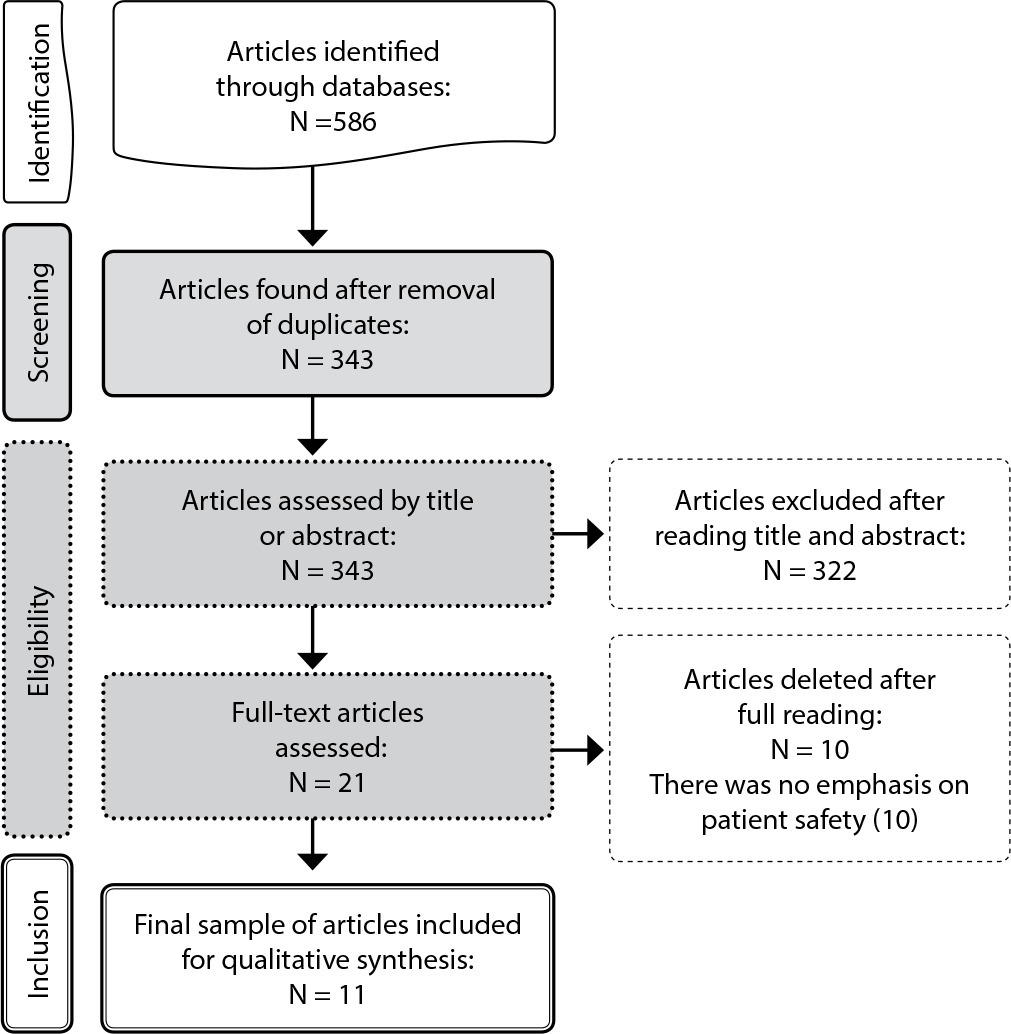
-
ORIGINAL ARTICLE10-03-2022
Evaluation of respiratory complications in a cohort of preterm infants who did not receive palivizumab monoclonal antibodies
Revista Brasileira de Enfermagem. 2022;75(6):e20210362
Abstract
ORIGINAL ARTICLEEvaluation of respiratory complications in a cohort of preterm infants who did not receive palivizumab monoclonal antibodies
Revista Brasileira de Enfermagem. 2022;75(6):e20210362
DOI 10.1590/0034-7167-2021-0362
Views0See moreABSTRACT
Objectives:
to analyze the occurrence of respiratory complications over the first year of life in preterm infants who did not receive palivizumab monoclonal antibodies.
Methods:
analytical retrospective cohort study with preterm infants born between 2012 and 2016 in Uberlândia, state of Minas Gerais, Brazil. Data collection occurred from January to November 2018, by consulting hospital and primary healthcare medical records. Data were processed with the Poisson regression model, with p<0.05.
Results:
of a total of 5,213 preterm births, 504 (9.7%) met the inclusion criteria. The preterm infants in this subset were assisted 2,899 times in primary care, which resulted in 1,098 (37.5%) medical diagnoses, of which 803 (78.5%) involved the respiratory tract. Preterm babies fed on formula milk at hospital discharge had more diagnoses of respiratory diseases. Maternal age (p=0.039), respiratory diagnosis at hospital discharge (p=0.028), and number of sporadic appointments (p<0.001) showed a significant association with bronchiolitis; number of sporadic appointments showed a significant association with occurrence of respiratory diseases; and breastfeeding had a protective effect against the development of bronchiolitis.
Conclusions:
preterm infants who did not receive palivizumab showed a high percentage of respiratory diseases, and breastfeeding helped protect them against bronchiolitis. It is recommended that these preterm babies be monitored in primary health care.
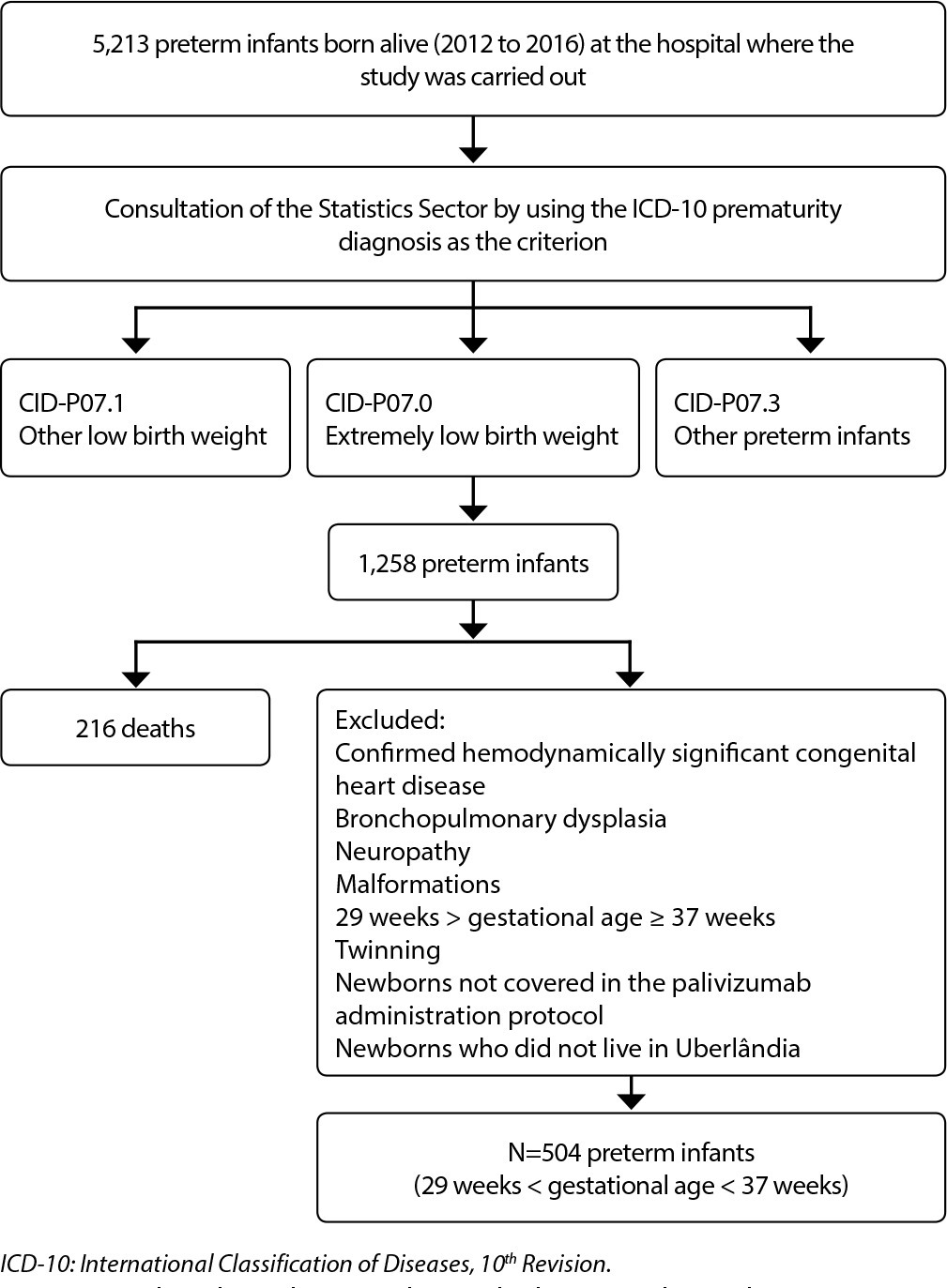
-
ORIGINAL ARTICLE04-09-2020
High-risk areas of leprosy in Brazil between 2001-2015
Revista Brasileira de Enfermagem. 2020;73(3):e20180583
Abstract
ORIGINAL ARTICLEHigh-risk areas of leprosy in Brazil between 2001-2015
Revista Brasileira de Enfermagem. 2020;73(3):e20180583
DOI 10.1590/0034-7167-2018-0583
Views0See moreABSTRACT
Objectives:
to identify high-risk areas of leprosy in Brazil from 2001 to 2015.
Methods:
this is an ecological study of spatial analysis based on Brazilian municipalities. Spatial scan statistics were used to identify spatial clustering and measure the relative risk from the annual detection rate of new cases of leprosy. By criterion based on the Gini index, only secondary clusters were considered.
Results:
spatial scan statistics detected 26 clusters, in which the detection rate was 59.19 cases per 100 thousand inhabitants, while in the remainder of the country it was 11.76. Large part of the cluster area is located in the Legal Amazon. These groups included only 21.34% of the total population, but 60.40% of the new cases of the disease.
Conclusions:
Leprosy remains concentrated in some areas, showing the need for control programs to intensify actions in these municipalities.
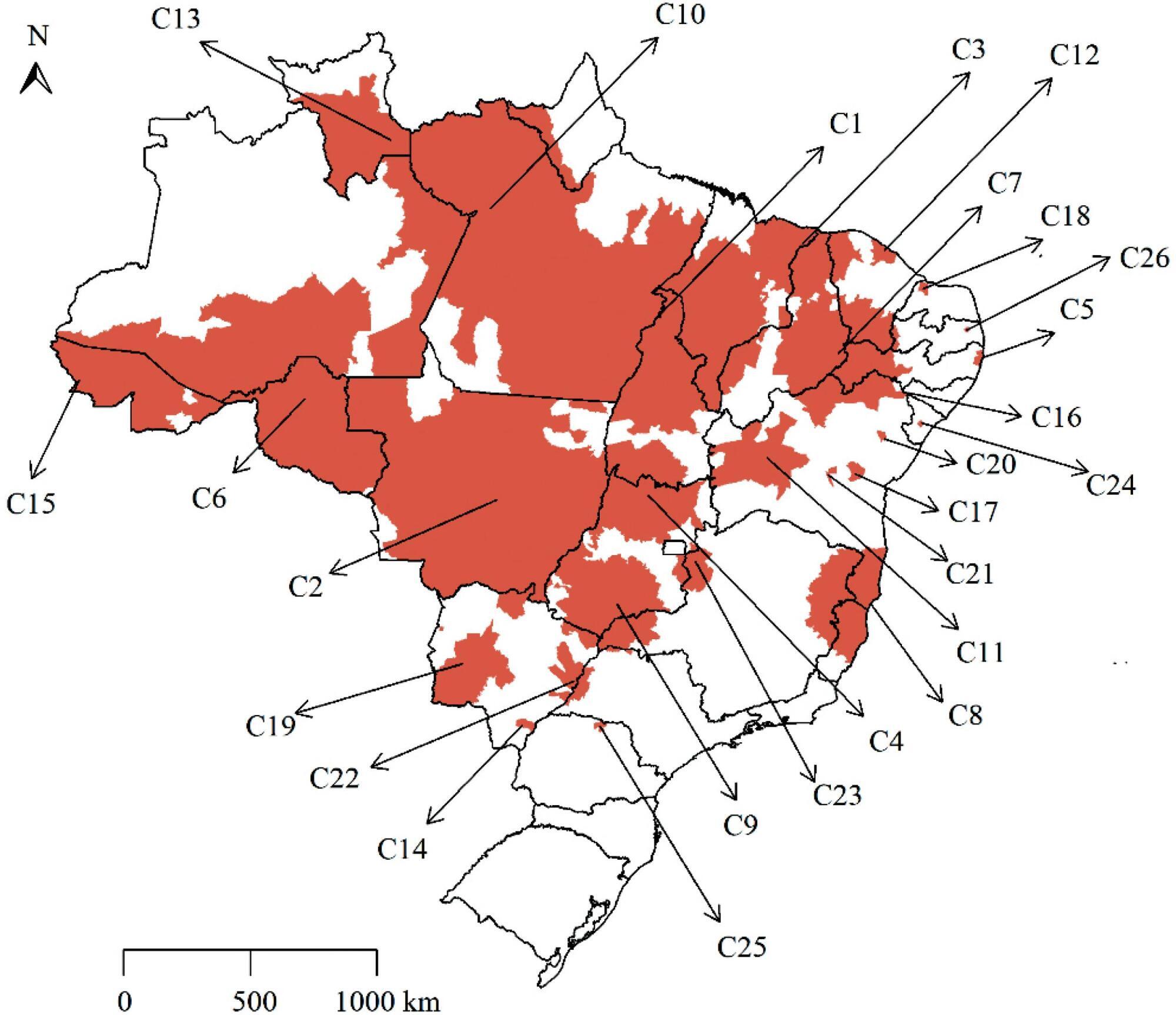
-
REVIEW08-14-2020
Nursing practice environment in Primary Health Care: a scoping review
Revista Brasileira de Enfermagem. 2020;73(6):e20190479
Abstract
REVIEWNursing practice environment in Primary Health Care: a scoping review
Revista Brasileira de Enfermagem. 2020;73(6):e20190479
DOI 10.1590/0034-7167-2019-0479
Views0INTRODUCTIONKnowledge and scientific evidence about nursing practice environments (NPE) in the context of Primary Health Care (PHC) is scarce.Policy makers, health and professional organizations have proposed to redesign the health system in PHC with the aim of increasing citizens’ accessibility, improving customer outcomes and maximizing efficiency. […]See more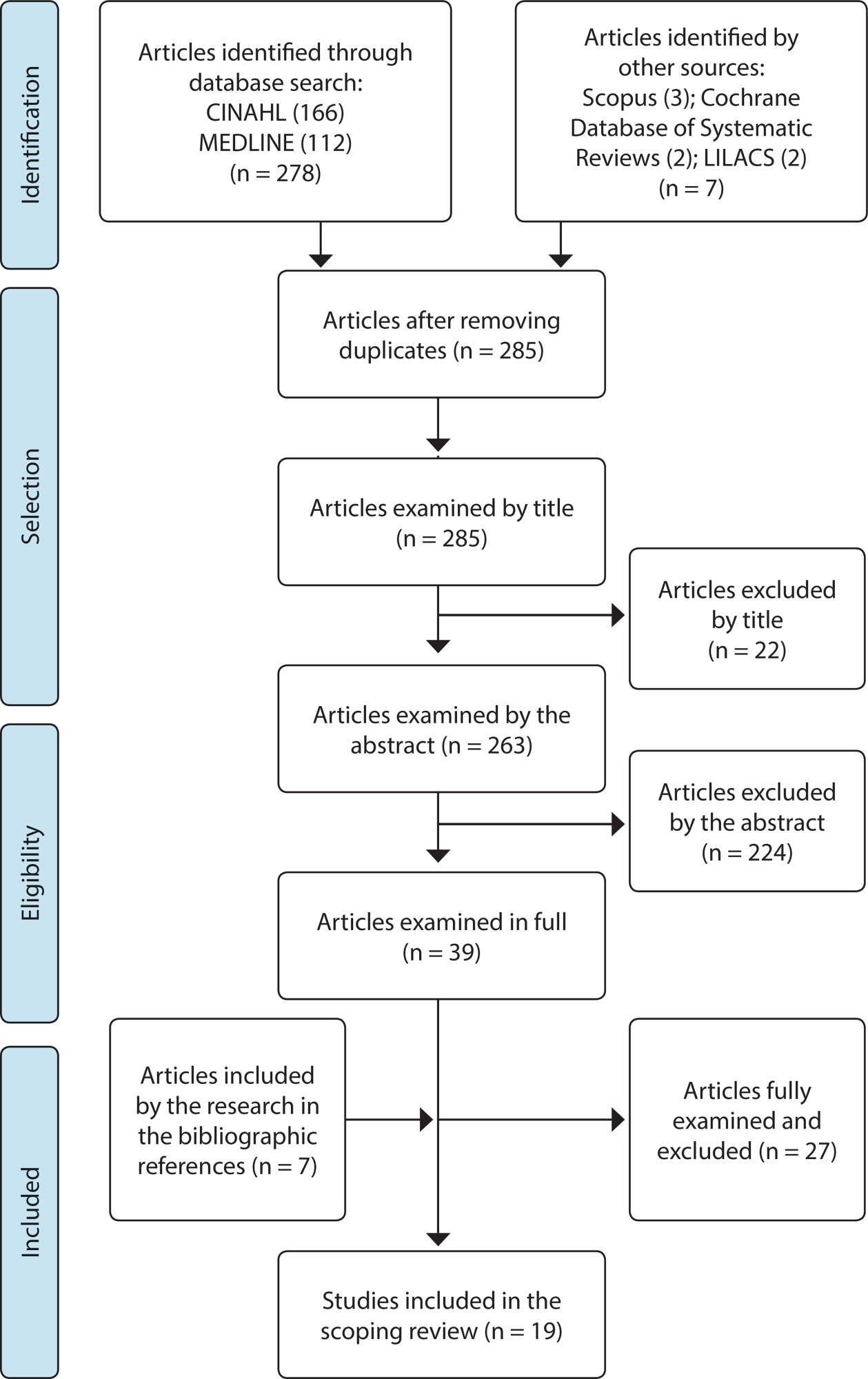
-
ORIGINAL ARTICLE12-13-2019
Perceptions and expectations of pregnant women about the type of birth
Revista Brasileira de Enfermagem. 2019;72:41-49
Abstract
ORIGINAL ARTICLEPerceptions and expectations of pregnant women about the type of birth
Revista Brasileira de Enfermagem. 2019;72:41-49
DOI 10.1590/0034-7167-2017-0731
Views0See moreABSTRACT
Objective:
to understand the perceptions and expectations of pregnant women about the type of birth.
Method:
this is a qualitative research, based on the assumptions of the Humanization of Obstetric Care. 15 pregnant women were interviewed twice at the beginning and the end of gestation between October 2015 and May 2016. Data were analyzed according to the method of the Discourse of the Collective Subject.
Results:
the discourses were associated with four themes: Advantages of vaginal birth over cesarean section; Fear and unpredictability of vaginal birth; Importance of the doctor in the definition of the type of birth; and Influence of family and friends in choosing the type of birth.
Final considerations:
according to pregnant women, vaginal birth has more benefit compared to cesarean section. However, during gestation and birth, fear of pain and the unexpected, and medical opinions of friends and family against vaginal birth strongly influence the choice of cesarean section.
-
REVIEW09-30-2020
Telenursing in care, education and management in Latin America and the Caribbean: an integrative review
Revista Brasileira de Enfermagem. 2020;73:e20190317
Abstract
REVIEWTelenursing in care, education and management in Latin America and the Caribbean: an integrative review
Revista Brasileira de Enfermagem. 2020;73:e20190317
DOI 10.1590/0034-7167-2019-0317
Views0See moreABSTRACT
Objective:
Analyze the knowledge generated about telenursing related to the roles of nurses (care, education and management) in Latin America and the Caribbean, based on scientific evidence.
Methods:
Integrative review, for the years 2009 to 2019, in scientific databases from Latin America and the Caribbean. Twelve articles were selected.
Results:
Nine studies focused on care and three on education. The information and communication technology used in the studies was telephony directed toward non-communicable diseases. There were concerns about the remote communication process. With respect to education, two focused on educating health teams and one on educating patients.
Conclusion:
It is necessary to conduct studies on telenursing that generate changes in care practices, explore information and communication technology resources and provide communication training focused on this new care model.
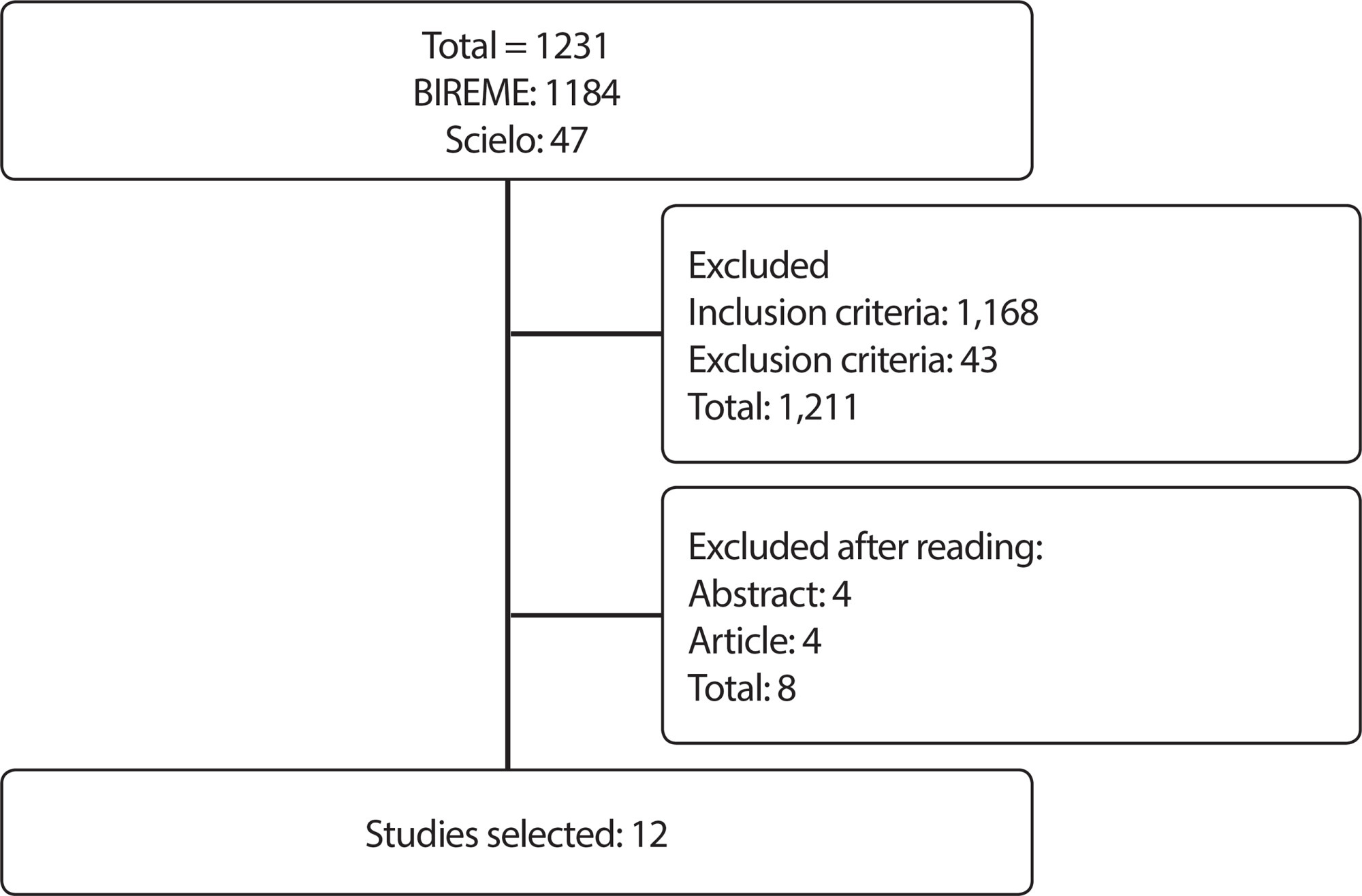
-
REVIEW04-16-2021
Clinical outcomes of patient navigation performed by nurses in the oncology setting: an integrative review
Revista Brasileira de Enfermagem. 2021;74(2):e20190804
Abstract
REVIEWClinical outcomes of patient navigation performed by nurses in the oncology setting: an integrative review
Revista Brasileira de Enfermagem. 2021;74(2):e20190804
DOI 10.1590/0034-7167-2019-0804
Views0See moreABSTRACT
Objective:
to evidence the clinical outcomes of navigation performed by nurses in cancer patients.
Methods:
this is an integrative literature review with collection in MEDLINE via PUBMED, LILACS, Web of Science, Scopus, and CINAHL databases. The final sample consisted of seven studies. The data were analyzed and presented descriptively. Data related to clinical outcomes were compiled and described in full. The Agency for Healthcare Research and Quality categorization was used to assess the level of evidence.
Results:
the clinical outcomes demonstrated were decreased distress, anxiety and depression, improved control and management of symptoms, improved physical conditioning, improved quality and continuity of care, improved quality of life, reduced time to start treatment.
Final considerations:
there is research that shows better clinical outcomes in cancer patients through navigation by nurses across the continuum of health care.
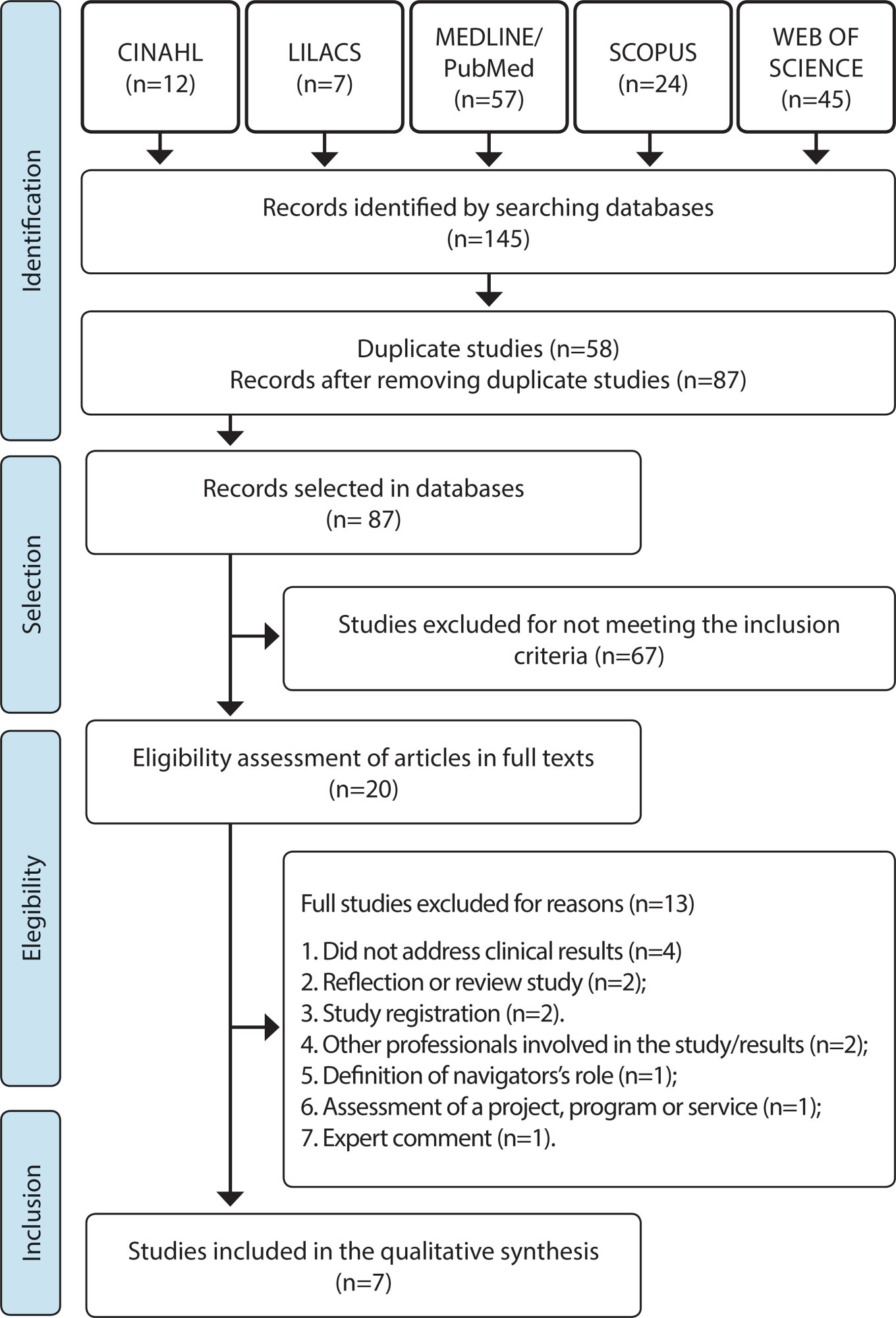
-
ORIGINAL ARTICLE06-29-2020
Personal Protective Equipment in the coronavirus pandemic: training with Rapid Cycle Deliberate Practice
Revista Brasileira de Enfermagem. 2020;73:e20200303
Abstract
ORIGINAL ARTICLEPersonal Protective Equipment in the coronavirus pandemic: training with Rapid Cycle Deliberate Practice
Revista Brasileira de Enfermagem. 2020;73:e20200303
DOI 10.1590/0034-7167-2020-0303
Views0See moreABSTRACT
Objective:
to discuss the application of Rapid Cycle Deliberate Practice for attire and unattire training in the context of COVID-19 and structure a practical guide to the application at this juncture.
Methods:
this methodological study described theoretical and practical aspects of the application of a simulation strategy as a technological training tool. An application guide was constructed from the search for evidence from the main health authority bodies in Brazil.
Results:
maximizing time in Deliberate Practice, feedback with evidence and psychological security are the principles of this strategy. The dynamic involves repetition and feedback. The application guide presents the sequence of actions for attire and unattire.
Final considerations:
coping with this pandemic requires appropriate use of personal protective equipment. The authors suggest the Rapid Cycle Deliberate Practice as a technological educational tool for attire/unattire, since it encourages mastery performance.
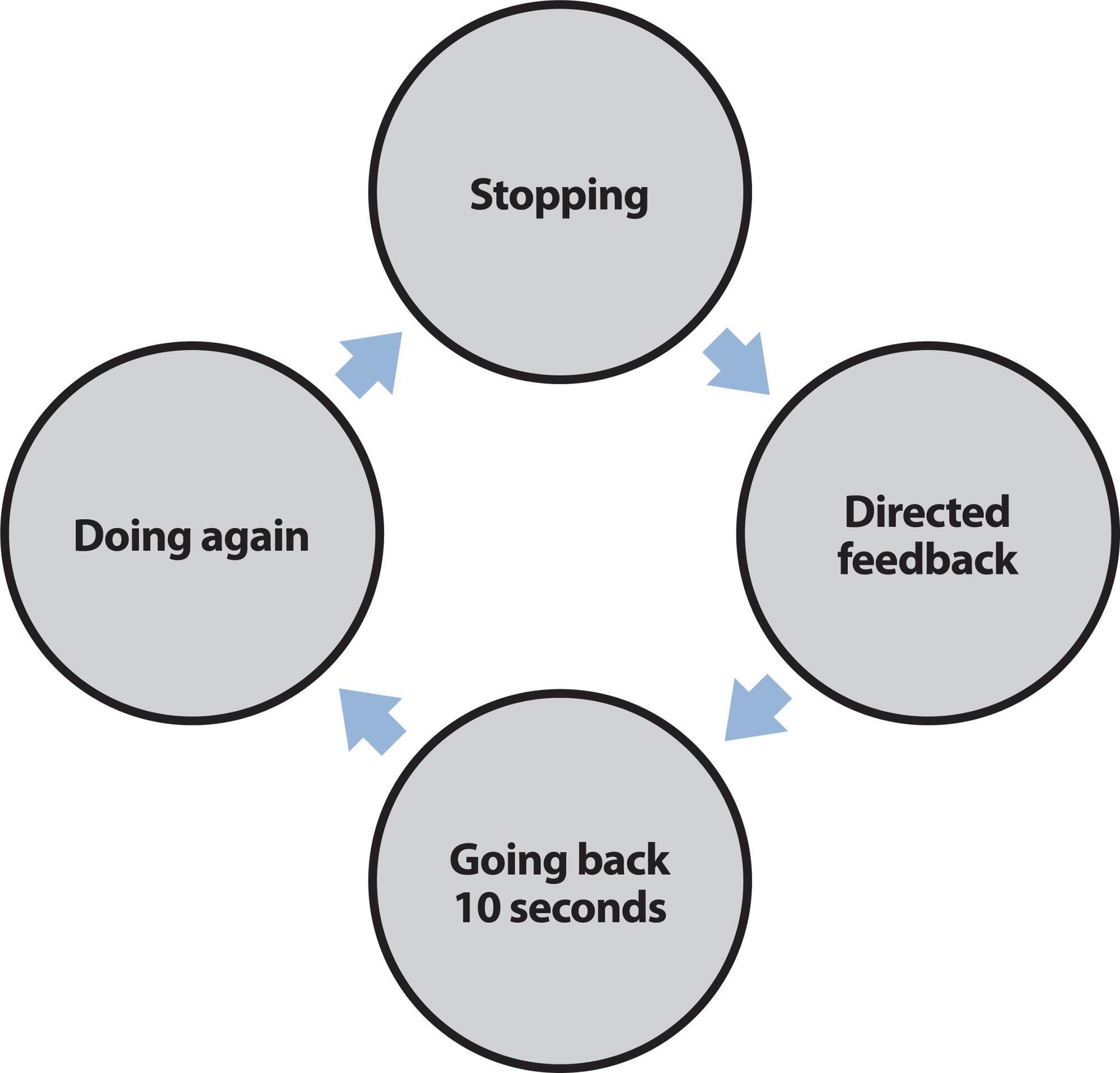
-
ORIGINAL ARTICLE08-19-2019
Interruptions and nursing workload during medication administration process
Revista Brasileira de Enfermagem. 2019;72(4):1001-1006
Abstract
ORIGINAL ARTICLEInterruptions and nursing workload during medication administration process
Revista Brasileira de Enfermagem. 2019;72(4):1001-1006
DOI 10.1590/0034-7167-2018-0680
Views0See moreABSTRACT
Objective:
To investigate the sources and causes of interruptions during the medication administration process performed by a nursing team and measure its frequency, duration and impact on the team’s workload.
Métodos:
This is an observational study that timed 121 medication rounds (preparation, administration and documentation) performed by 15 nurses and nine nursing technicians in a Neonatal Intensive Care Unit in the countryside of the state of São Paulo.
Resultados:
63 (52.1%) interruptions were observed. In each round, the number of interruptions that happened ranged from 1-7, for 127 in total; these occurred mainly during the preparation phase, 97 (76.4%). The main interruption sources were: nursing staff – 48 (37.8%) − and self-interruptions – 29 (22.8%). The main causes were: information exchanges – 54 (42.5%) − and parallel conversations – 28 (22%). The increase in the mean time ranged from 53.7 to 64.3% (preparation) and from 18.3 to 19.2% (administration) – p≤0.05.
Conclusão:
Interruptions in the medication process are frequent, interfere in the workload of the nursing team and may reflect on the safety of care.
-
ORIGINAL ARTICLE12-21-2020
Construction and validation of a mobile application for development of nursing history and diagnosis
Revista Brasileira de Enfermagem. 2020;73:e20190674
Abstract
ORIGINAL ARTICLEConstruction and validation of a mobile application for development of nursing history and diagnosis
Revista Brasileira de Enfermagem. 2020;73:e20190674
DOI 10.1590/0034-7167-2019-0674
Views0See moreABSTRACT
Objectives:
to describe the construction and validation process for a mobile application for development of the nursing history and diagnosis.
Methods:
methodological study conducted in 2018 in three stages: content creation, based on the Basic Human Needs categories and nursing diagnoses; content assessment by nine nursing judges, with calculation of the content validity index; and construction of the application, which included definition of the requirements, a conceptual map, implementation and prototyping options, tests and implementation.
Results:
the application was organized by sections: Grouped Basic Human Needs, Cranial pair tests, Clinical assessment scales and Additional tests. Two section were adjusted according to the judges’ suggestions.
Final Considerations:
it is the first application produced in Brazil based on the Basic Human Need categories, which enables quick access to information, concepts and typical nomenclatures of semiology, recording of clinical data and definition of nursing diagnoses.
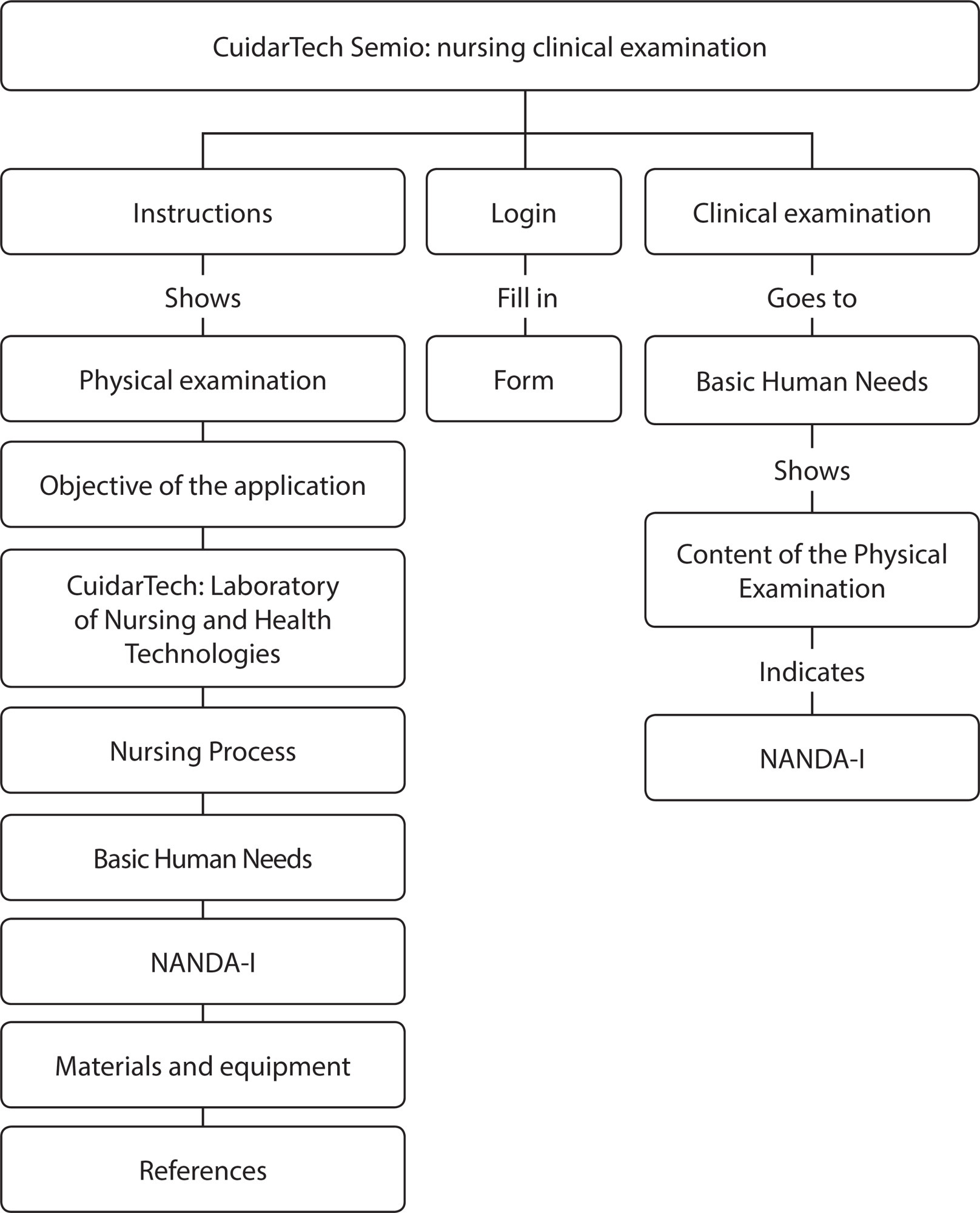
Search
Search in:
Nuvem de Tags
Enfermagem (930)Cuidados de Enfermagem (269)Atenção Primária à Saúde (239)Idoso (208)Educação em Enfermagem (151)Segurança do Paciente (150)Saúde Mental (145)Educação em Saúde (139)Estudos de Validação (131)Qualidade de Vida (104)Tecnologia Educacional (100)Promoção da Saúde (99)COVID-19 (91)Criança (91)Família (87)Enfermagem Pediátrica (86)Saúde do Trabalhador (86)Adolescente (85)Saúde Pública (82)Estudantes de Enfermagem (77)



